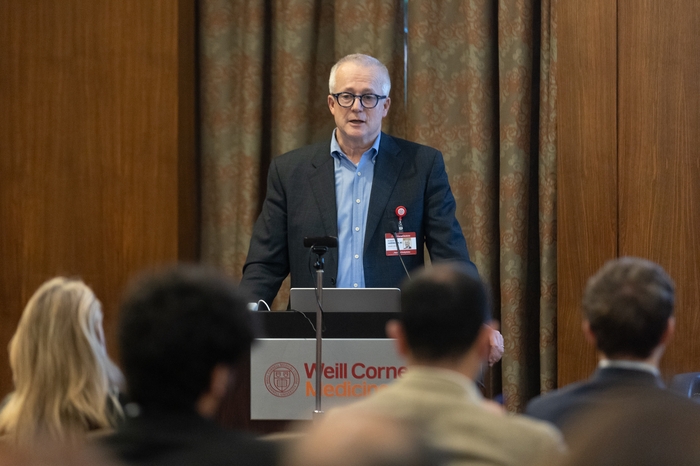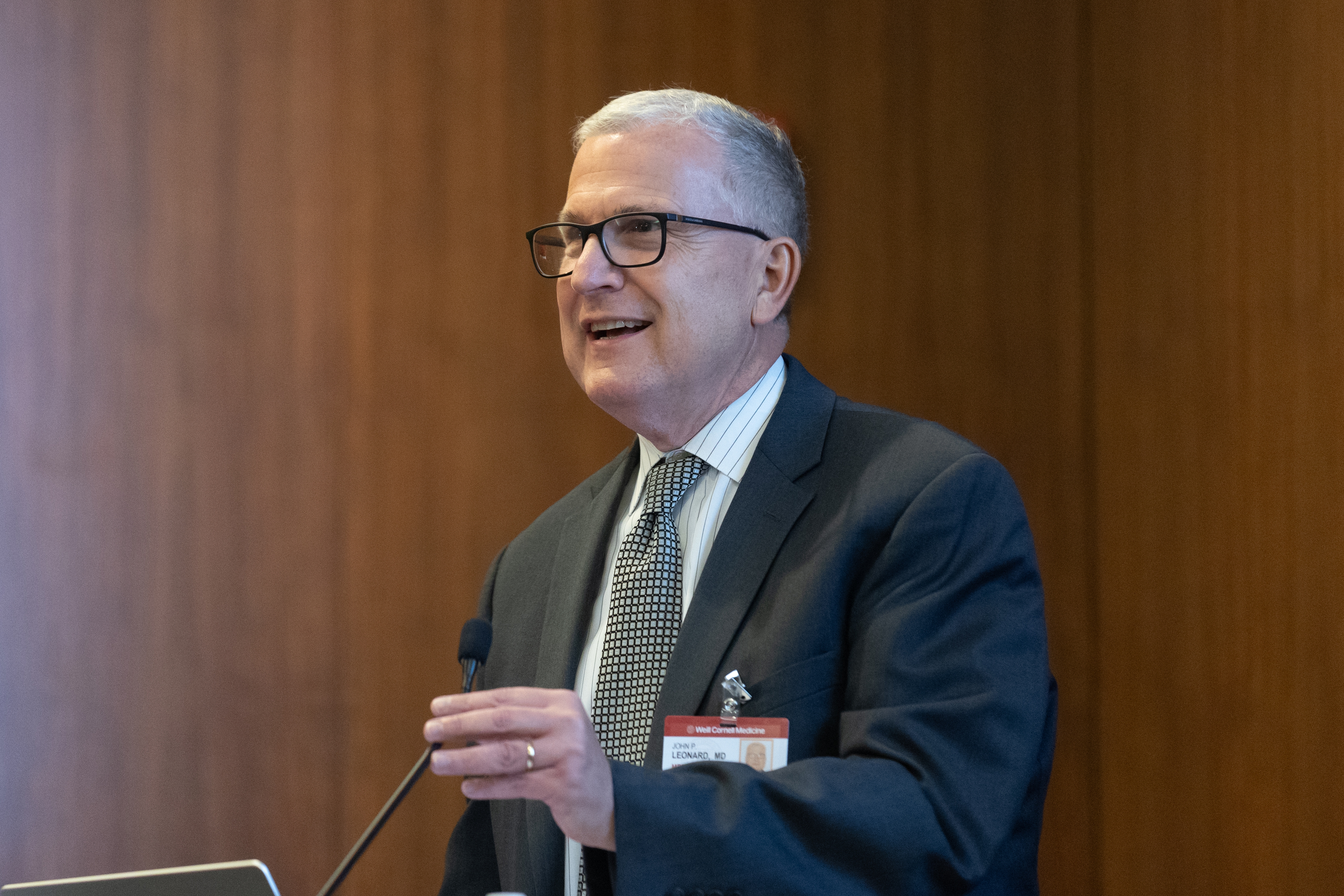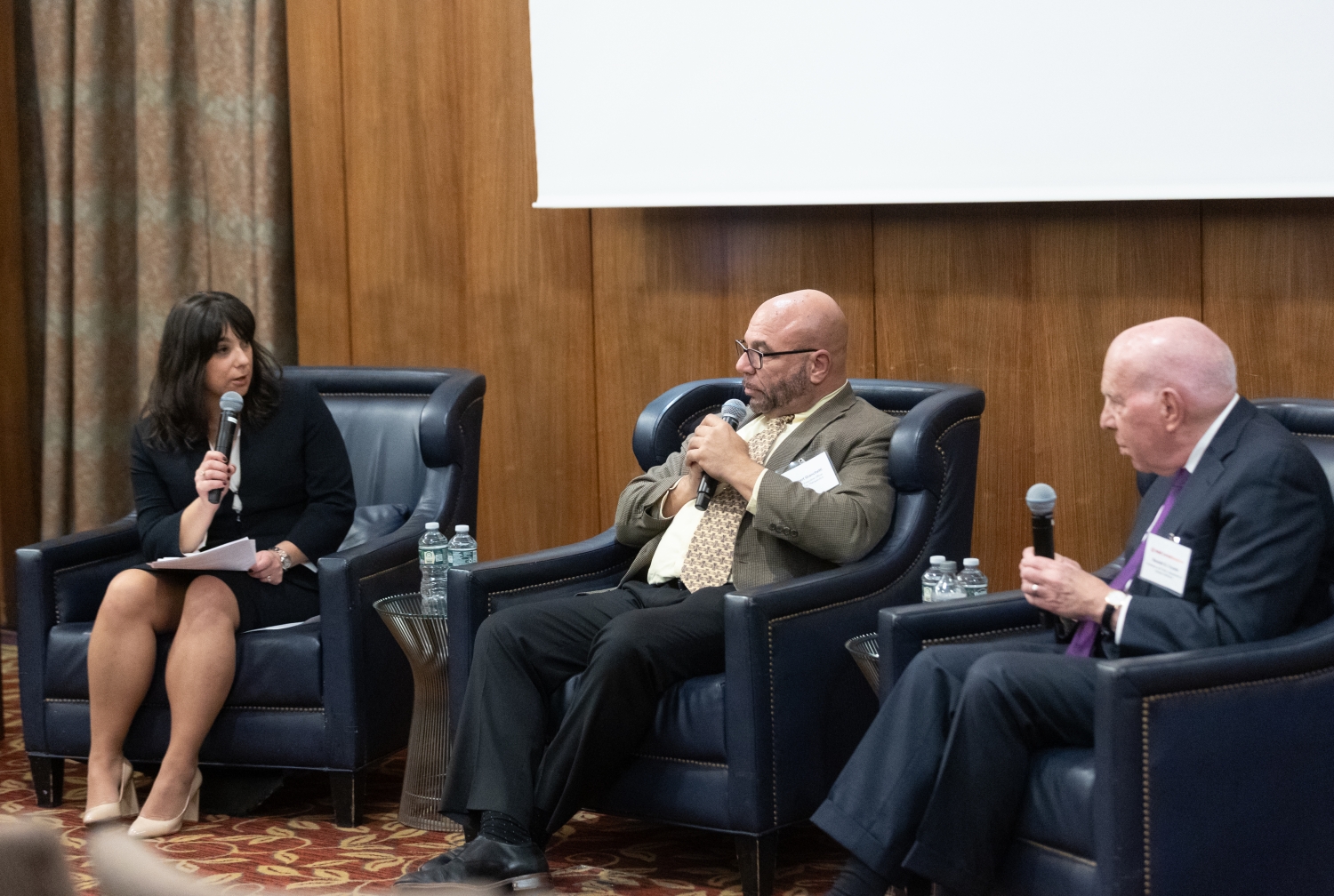One of the hardest points on the translational road “from bench to bedside” can be the point where you have to turn over your discovery to a company you’ve founded—a company whose subsequent direction you won’t fully control.
“It’s sort of your baby that you’re turning over,” said Dr. Ronald Crystal, chair of the Department of Genetic Medicine and the Bruce Webster Professor of Internal Medicine at Weill Cornell Medicine, gene therapy pioneer and four-time startup founder. “But you’ve got to be willing to let go of it; it takes a village to develop a new drug.”
Dr. Crystal and others recounted recent entrepreneurial journeys—in his case, to bring a gene therapy for refractory angina to the clinic—at the seventh annual Dean’s Symposium on Innovation and Entrepreneurship, hosted by Enterprise Innovation on Nov. 7 in the Griffis Faculty Club. Now an established tradition, the Dean’s Symposium celebrates innovation and Weill Cornell Medicine’s entrepreneurial spirit, and showcases the institution’s support for faculty and trainees who want to bring their discoveries to market to benefit a large patient population.

Dr. Robert Harrington speaks during the Dean's Symposium on Innovation and Entrepreneurship.
“You are part of a medical college that has a history of innovation,” Dr. Robert Harrington, the Stephen and Suzanne Weiss Dean of Weill Cornell Medicine reminded attendees, citing the example of Weill Cornell’s Dr. Georgios Papanikolaou, developer of the Pap Smear a century ago. Dr. Harrington noted that, thanks to Weill Cornell Medicine’s network of programs supporting translational research, there are currently 44 active startups founded by institutional researchers, with a total of nearly $2 billion in funding, including from top-tier venture capital firms.
Dr. Krystyn Van Vliet, Cornell University’s vice president for research and innovation, emphasized that the journey from discovery to commercialization requires much resilience and expertise, which is why a “team that helps guide the harder steps” of our investors is so important.
Dr. John Leonard, senior associate dean for innovation and initiatives, discussed the recent expansion of Weill Cornell Medicine Enterprise Innovation’s team of experts and entrepreneurial programs.
“It's really important to keep in mind that our remit here, and the opportunities, are broad,” Dr. Leonard said, noting that Enterprise Innovation partners with innovators to develop not only therapeutics and medical devices but also diagnostics, laboratory tools and software tools for clinical and research applications.

Dr. John Leonard
“If you’re working in these areas, there are opportunities to take your findings forward in different ways,” said Dr. Leonard, who is also interim chair of the Weill Department of Medicine and the Richard T. Silver Distinguished Professor of Hematology and Medical Oncology at Weill Cornell Medicine.
Keynote speaker Dr. Sangeeta Bhatia, a physician, biomedical engineer and serial inventor/entrepreneur who is the John J. and Dorothy Wilson Professor of Engineering and director of the Laboratory for Multiscale Regenerative Technologies at M.I.T., offered an appealing picture of translational success as she discussed some of her many inventions. These include a human-liver-on-a-chip device that pharma companies can use to study drug metabolism without posing risks to patients; an injectable set of nano-sensors that can be collected in urine to provide a multiplex readout of liver health as an alternative to liver biopsy; and a liver-cell-based therapy for treating liver disease.
Dr. Bhatia highlighted that now is a great time for biomedical and biotech entrepreneurs, given the advances and convergences in miniaturization, artificial intelligence, stem cell methods, genomics and other relevant, cutting-edge technologies.
She noted too that female academics, though underrepresented in startups, are getting more support and resources than ever. At M.I.T., for example, Dr. Bhatia recently helped start the Faculty Founder Initiative, which provides skilled mentorship, funding, legal advice, lab space and other resources to female faculty. She stressed that there are ways to minimize conflicts between entrepreneurship and family life, recounting how her first startup was hatched with colleagues in the hours after her youngest daughter went to bed, whereas for a subsequent venture, during the pandemic, she and her co-founders raised most of the initial funding via Zoom.
“For those of you who have young families, it doesn’t have to be that you’re always going to dinners and getting on planes—there are all kinds of ways to do it,” she said.
Dr. Bhatia also underscored that entrepreneurship tends to be easier when one doesn’t go it alone.
“It can be lonely and stressful—you’re doing something no one’s ever done before and there are no right answers, and that can keep you up at night,” she said. “It’s so much more fun to be on that ride with a colleague that you like and trust.”
Trust, and willingness to bring others into one’s circle of trust, was a theme echoed by Dr. Crystal and his colleague Albert Gianchetti, CEO of Xylocor Therapeutics, the startup now developing the angina gene therapy. In a discussion moderated by Dr. Lisa Placanica, senior managing director of Center for Technology Licensing at Weill Cornell Medicine, the scientist and seasoned pharma CEO spoke about hurdles overcome and lessons learned.
“The biotech side, the business side, is like a whole different world, and you learn that the people involved on that side are really smart about that side of things—they may not know the things we scientists know, but we don’t know the things they know,” Dr. Crystal said.
The stories highlighted the key events in the science-to-startup journey: the initial high-impact scientific publication; the recognition of translational potential; the filing of patent applications and the drafting of a business plan; the acquisition of a mentor or mentors; the search for seed money and a founding CEO; the months-to-years-long hunt for that first big (“Series A”) investment, from venture capital investors or an established pharma company; and lastly—particularly for therapeutic ventures—the first tests in patients.
“You get better at it over time,” Dr. Bhatia said. “You develop a keener sense of what a company needs to make it to the next level, and at the same time your network of connections with investors and entrepreneurs is expanding.”
Even so, she added, each entrepreneurial journey is different, and involves its own challenges and pitfalls.
Dr. Crystal reiterated this point during his fireside chat. “I would advise the budding entrepreneurs in the audience to use the resources we have here to help you avoid some of those pitfalls,” he said.
Naturally, all spoke of the satisfaction—at the end of that entrepreneurial road—of being able to improve patients’ lives.
“One of the most exciting things for me,” Gianchetti said, “was when we went out and interviewed patients who did very well in a trial, and they were talking about how much better they felt—one asked, ‘When can my family make an investment in this company? Because what you guys did for me was a miracle.”

